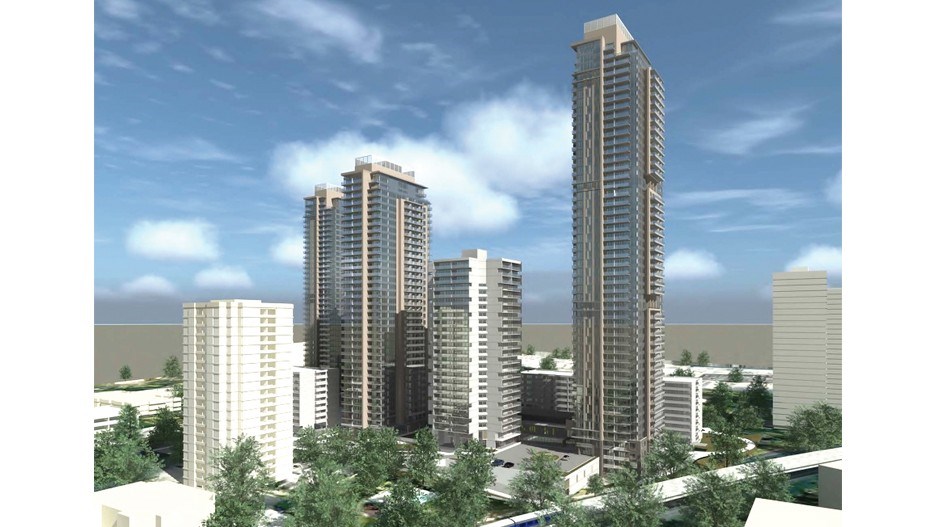Rising vacancy rates for new rentals and B.C.’s restrictive rental environment, which includes a freeze on rental increases this year, have had little effect on multi-family developers.
As of February, 768 new rental apartments had started construction in Metro Vancouver, up 34% from a year earlier and adding to the 5,207 units that broke ground in 2020, according to Canada Mortgage and Housing Corp. (CMHC).
Yet, while Metro Vancouver’s vacancy rate has increased to 2.6% this year, up from the 1.1% range since 2018, the vacancy rate for the more expensive apartments in new rental buildings spiked to 6.2%.
In the City of Vancouver, the vacancy rate for new rental buildings completed in the past five years soared to 8.7% from 1.4%, year over year, according to CMHC.
Still, a boom in new rental apartments is building from Metro Vancouver to Vancouver Island.
Starlight Developments, a division of Starlight Investments, has submitted a rezoning proposal to the City of Burnaby for the biggest rental build in B.C.
The proposal includes the retention of four concrete rental towers with 528 units and the addition of three highrise concrete towers and 1,200 new rental homes for at total of 1,728 suites when the development is completed.
The Starlight property is within the City of Burnaby’s Lougheed Town Centre Plan, which calls for the transformation of the area into a dense, mixed-use community supported by rapid transit.
Starlight is Canada’s largest multi-residential owner-operator. It’s B.C. portfolio has grown significantly with the recent $4.8 billion purchase of the Northview Apartment Real Estate Investment Trust portfolio, and Aqua at Plaza 88, a rental housing tower, in New Westminster. Starlight now manages approximately 4,800 rental suites in the province.
Vancouver Island
Meanwhile, telecommunication giant Telus (TSX:T) and partner Omicron, of Vancouver, are proposing a $70 million project with 197 rental units in Nanaimo’s Old City Quarter as public and private sector investment in the city’s construction sector is shaping up to have another strong year.
“We are seeing a trend this year toward public investment,” said Jeremy Holm, Nanaimo’s director of development approvals.
Despite the pandemic, Holm anticipates 2021 building permit value will be similar to 2020’s, which reached $243 million. Of that, $203.8 million went to residential construction, 65% of which was rentals.
Interest in investing in Nanaimo is coming from off-Island developers, including Alberta, Manitoba and Ontario, Holm said.
He added that the Telus Living Nanaimo proposal would be one of the city’s largest private-sector rental projects. Up to 500 residents would live on site once it is completed.
This proposal would see 1.75 acres subdivided off Telus’ existing 2.75-acre property, where it has its Nanaimo office.
Units would rent at market rates, said Pablo Yuste, architect and principal at Omicron, which is providing development management, design, engineering and construction management.
“This project is strategically focused at the middle rental market as this is the area that is currently under-served,” he said in an email.
The two six-storey buildings, covering 164,000 square feet, would be connected through landscaping.
Yuste said construction cost is pegged at $50 million.
Nanaimo would receive $2 million in development fees, and the project is expected to create between 650 and 700 jobs.
Omicron is planning for a development permit approval this spring. Yuste said construction would take approximately 24 to 30 months.
Other housing projects include a two-building, 79-unit Parkshore Projects Ltd. rental development on Haliburton Street on the city’s south.
Approved in January 2021, it follows a similar project next door by the same developer. •
– With files from the Times Colonist and Western Investor




